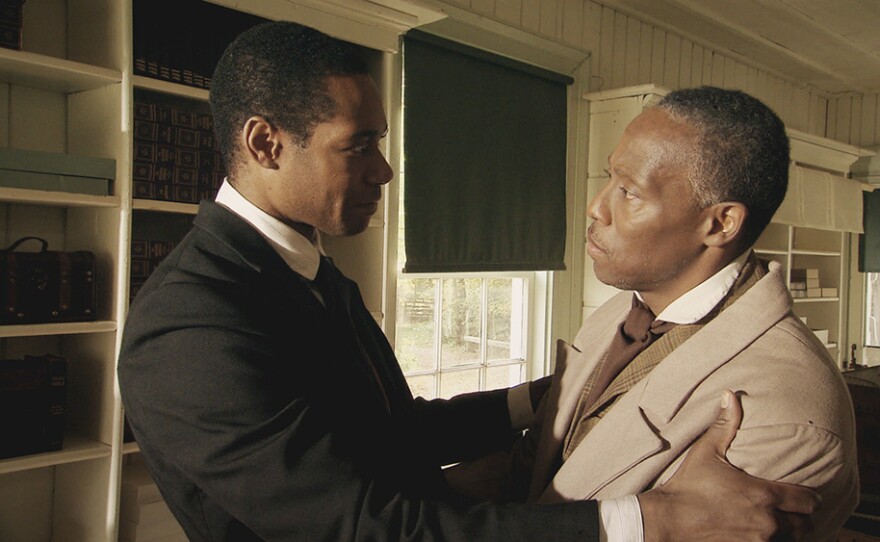Encore Tuesday, Feb. 8, 2022 at 9 p.m. on KPBS TV / On Demand
"Underground Railroad: The William Still Story" blends stories, characters, and historical context with evocative reenactments and sometimes shocking, often touching, accounts from the day. The predominant “voices” in the program are those of William Still and a selection of freedom seekers whose stories helped define the era.
The first generation of his family born free, abolitionist and historian William Still (1821-1902) was determined to get as many runaways as he could across the U.S. border to Canada. Still risked everything to keep detailed records of individuals’ stories, eventually compiled into a book recognized as the most authentic account of the inner workings of the Underground Railroad and the plights of those who used it. The film uses these powerful diaries, evocative reenactments, historical perspectives and moving accounts from the day to re-create one of North America’s greatest sagas.
“The heroism and desperate struggle that many of our people endured should be kept green in the memory of this and coming generations,” Still wrote. He believed future generations needed heroes and these were the most heroic people he could imagine.
Still’s diaries remain one of the most important and awe-inspiring records of the Underground Railroad. Still carefully interviewed fugitive slaves who came to him for help and recorded how they escaped in hopes that one day the information would help families and friends find each other.
To this day, Still’s writings contain some of the best evidence we have of the workings of the Underground Railroad and the freedom seekers who used it. The program contains dramatic and heroic stories that were part of the most immense humanitarian enterprise of the 19th century, perhaps ever. The Underground Railroad was a complex and complicated network of freed slaves, white abolitionists, sympathizers, and safe houses.
Through Still’s diaries the program captures the improbable story of Henry “Box” Brown’s escape from slavery. Brown got his nickname after escaping to freedom by traveling in a wooden create from Virginia to Philadelphia. The crate was addressed to William Still and when he pried it open Brown popped out. Now free, Brown extended his hand to Still and said, “How do you do gentlemen.” The story became a sensation across America and Europe.
The program also documents one diary entry that held special meaning for William Still. On an August day in 1858, he made the astonishing discovery that a runaway slave he was talking to was actually his long-lost brother who had been “sold down the river” after Still’s parents escaped slavery.

Years after the abolition of slavery, Still wrote: “It was my good fortune to lend a helping hand to the weary travelers flying from the land of bondage.”
Watch On Your Schedule:
The film is available on demand.
With the PBS Video App, you can watch your favorite and local station shows. Download it for free on your favorite device. The app allows you to catch up on recent episodes and discover award-winning shows.
Credits:
A co-production of WNED, PBS and 90th Parallel Productions Ltd., Toronto.





